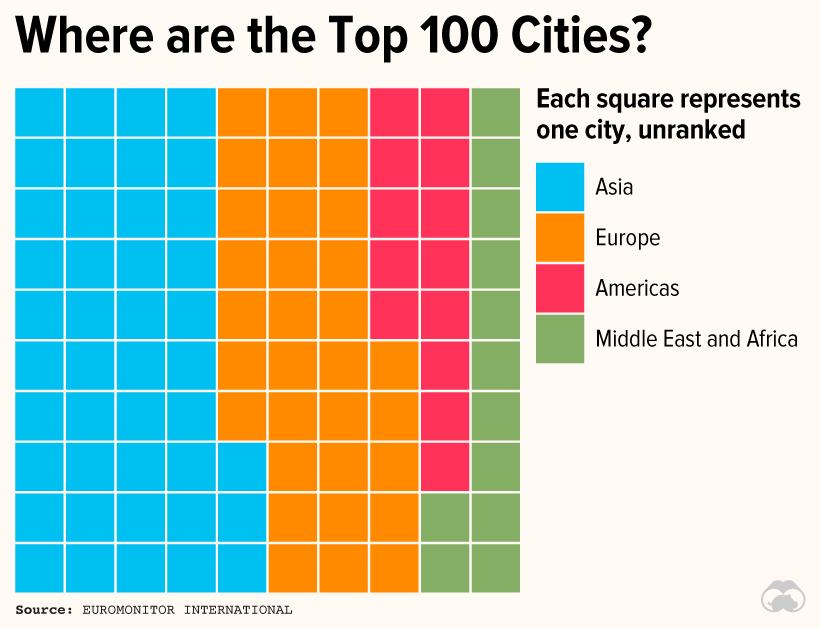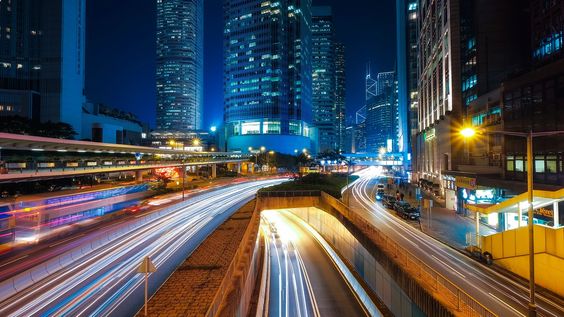Table of Contents
![]()
The 100 most popular destinations in town
The pandemic has caused many of us, but it can not stop people from wandering.

Cities such as Hong Kong, Bangkok and London have ranked as city destinations for years, but movement below them – as demonstrated in the above infographic – helps to underline the fascinating trends in travel before COVID-19.
With the data in the 2019 travel report of Euromonitor International, we can find out where travellers are likely to be taken when their passports are again useful. Data collected from 400 cities in mid-2019 includes millions of international travellers who stayed longer than 24 hours at their destination.
Here’s a closer look at where travellers are likely to experience post-pandemic conditions.
Not alone in the top
Although the top ranking of this list has remained fairly stable in recent years, there has been an impressive influx of travellers in two cities.
Both Paris and Istanbul made significant gains between 2017 and 2019, with visitors growing respectively by 20.6 and 37.2 per cent:

Note that in this top 10 only one North American town, New York City, is found. Asian cities are also half the leading group, with two of the top 10 cities in China. Although Hong Kong leads the top 100, the political turmoil led to a significant decline in international visitors between 2017 and 2019 of 4.2 per cent.
Macau and Istanbul made the greatest changes in the top 10, but the rise was subtle. Between 2013 and 2018, both cities gathered two points, although each had significant growth rates of travellers, with Macau growing by 19.0%.
Furthermore, London is expected to continue its downward course based on data collected in 2019 and reach 5th place — mainly due to complications caused by Brexit and associated visa restrictions.
Trends: Take Flight Indian and Japanese cities
Most dramatic changes in the patterns of city travel are under the top 10. The Asian hot spots are gaining momentum and quickly reaching the top 100, signalling a shift in global preferences before lockdowns have commenced.
Take Japan, for example. Since 2013, the five Japanese cities in the top 100 have collectively increased by 352. From 2017 to 2019, the country’s top city destinations had an average traveller increase of 17.8%. With Japan’s impeccable COVID-19 containment, this trend can be exacerbated in years to come.
India echoes Japan’s dramatic rise in ranks. India’s 7 top 100 cities have increased by 229—with a massive average growth rate of 44.6 per cent between 2017 and 2019. Some of this growth is due to lifestyle tourism, especially in Delhi, which since 2017 has seen its traveller rate grow 49.6 per cent.
Before the pandemic, Delhi was expected to continue its steady growth and a steady jump that is now 11.
Where in the world? Where in the world? Europe and Asia
All other regions, followed by Europe, continue to lead Asia.
Since 2013, Asian cities have grown from 34 to 43 in the top 100. Asian outbound travel has also seen a boom in Europe and America’s travel campaigns targeting Asian travellers on social media platforms such as WeChat.

Why the ranking matters: You trust in travel
Tourism was regarded as a leading and resilient economic sector before the pandemic.
1,5 billion people travelled around the world in 2019. By 2030, this figure could rise to 1,8 billion, with many cities relying on tourist dollars increasingly.
The World Travel and Tourism Council reports that cities such as Macao, Cancun, Marrakech and Las Vegas all depend heavily on direct tourism and travel contributions to their respective GDP’s. More than 50% of Macau’s GDP was derived directly from tourism by 2018, while nearly half of Cancún’s GDP depends on travellers.
Countries such as India and the Philippines also rely heavily on travel. India has two jobs for each tourist and the Philippines has a one-job ratio for each tourist.
Where to next? Where to next? Up wheels
Millions of travellers do not lie — there is no question of the siren call of cities. In turn, these tourists have become a vital force for many of these destinations and an advantage for the international tourism industry.
The pandemic has reversed these dynamics and many people worldwide have been stopping since early 2020. It is only a matter of time, however, before the world opens again.
While travel may be very different in the future, hiking will not just disappear. Frustrated travellers, including digital nomads and remote workers, could have even more reason to flee.
Share This





Be the first to comment